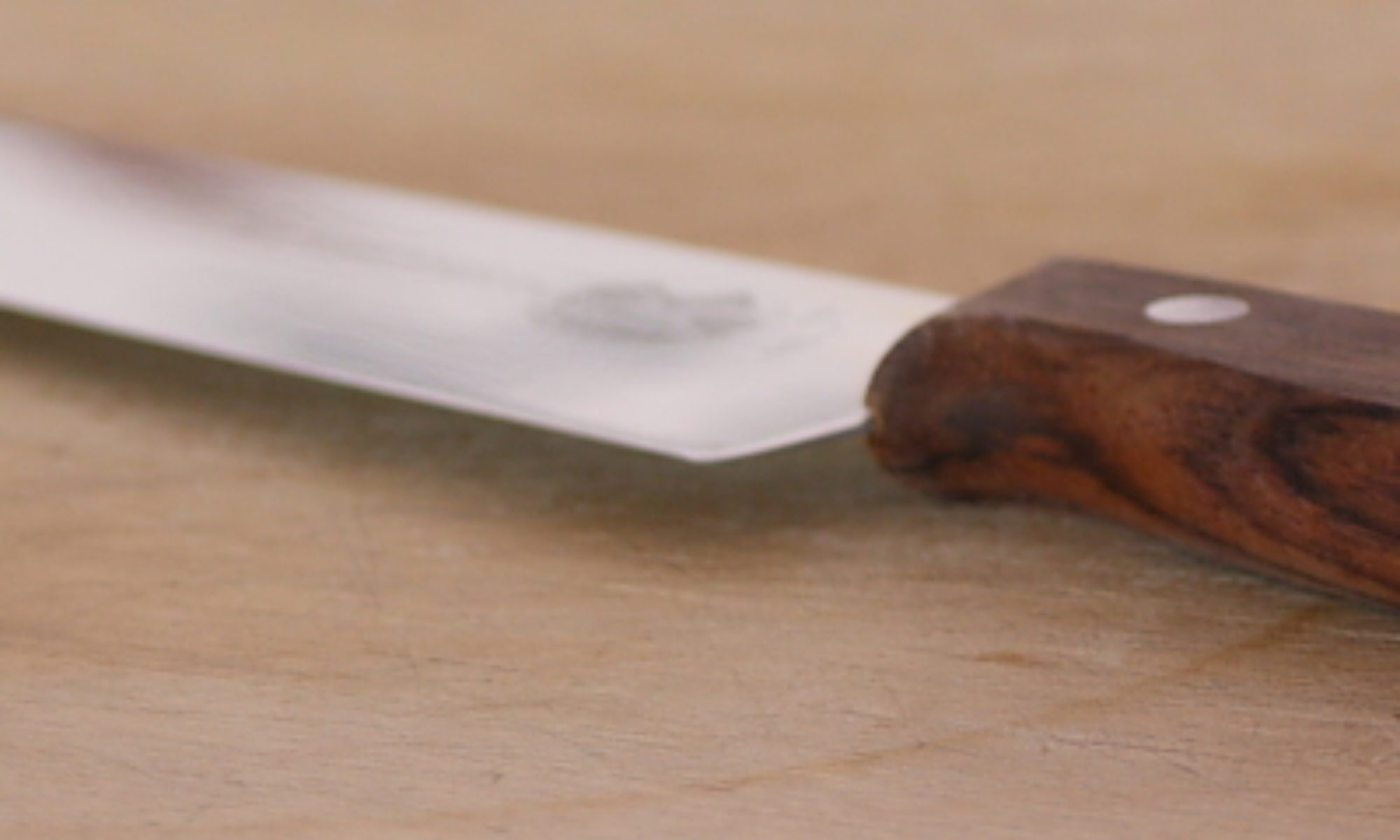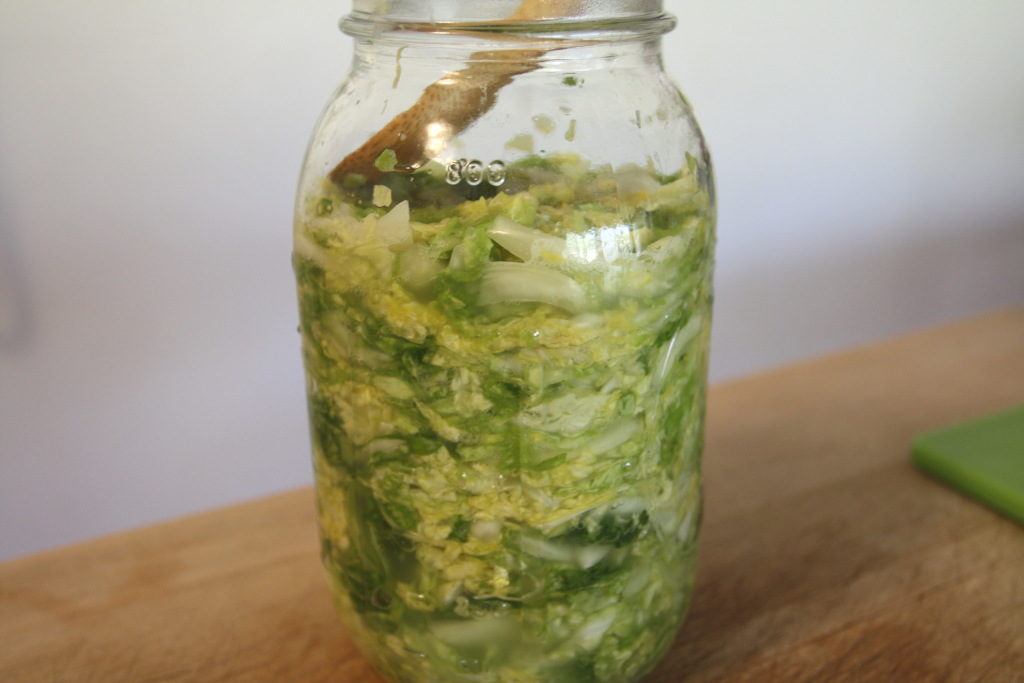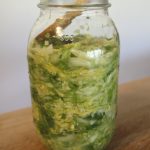
We’ve wanted to make up a batch of sauerkraut for years. Yes, years. So, why didn’t we? Well, the main reason is that we didn’t get cabbage in our weekly CSA share. Sure, we could have bought some cabbage at the store, but, we’d heard that the bacteria that start the fermentation of sauerkraut live right on the leaves of the cabbage, and we had no idea if pesticides (if we bought non-organic) or whatever washing is done in preparation for sale (for organic) would affect that. So we waited. And waited. And waited.
This week, the wait was over. We picked up a Savoy cabbage in our weekly share, and, while we used a few leaves in a soup, the rest went into our first-ever batch of sauerkraut. As you’ll see, it’s another of those really easy things that you can make yourself — remember, people used to make this stuff in large crocks, using 40+ pounds of cabbage, so you should have no problem scratchin’ out a quart jar.
Sauerkraut
Ingredients
- 1 medium head cabbage about 2pounds
- 3-4 tsp Kosher salt Morton's brand
Instructions
- Wash and quarter the head of cabbage. Trim out core, then slice thinly.
- Place in a large bowl and weigh and add 10-12 grams of salt for every 400 grams of cabbage.
- Massage salt into cabbage shreds until the cabbage starts to release liquid.
- Pack salted cabbage into a quart jar, pressing cabbage down firmly as you work. The liquid released should cover the cabbage when pressed down. If not, add a small amount of salted water (1/4 tsp per quarter cup).
- Cover jar and place on the counter in a shaded spot. Three times a day, use a wooden spoon to press cabbage down to submerge. Taste each time and ferment until desired sourness, then refrigerate to stop fermentation.
Ingredient discussion:
If you measure by weight, you can use any non-iodized salt you wish (we think iodized salt might impart an odd taste and make the liquid cloudy); we happen to use Morton’s kosher salt, so we figured out the amount in volume measurements. For the cabbage, we went with naturally-grown for reasons discussed above.
Procedure in detail:
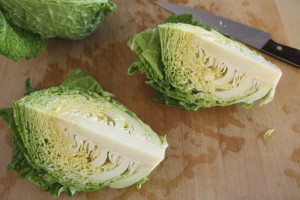
Quarter and core cabbage. Wash the cabbage well; we sliced our cabbage in half then thoroughly rinsed each half, draining out the water. Next, cut the cabbage into quarters and slice out the core.
Shred cabbage. Use a sharp knife and slice the cabbage thinly, about 1/16th of an inch thick. You could use a food processor, or a mandoline, or, if you’re a hard-core sauerkraut maker, we’ve seen large mandolines in antique stores sized for entire heads of cabbage. We went with a sharp chef’s knife.
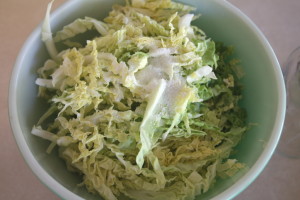
Salt. Place the cabbage in a large bowl and weight it. For us, we placed a bowl on the scale, pressed the tare button to zero it, then added cabbage. Once you have the weight in grams, divide by 40 to figure out the amount of salt and sprinkle it over the top. Or, use 3 teaspoons for each head of cabbage.
Massage. Using your clean hands, massage that salt into the cabbage. Use some muscle; we want to hear the cabbage crunch and crush. More muscle. That’s it. Now, we’re getting some liquid released. Once the cabbage has released some liquid, enough that everything is moist, it’s time to start packing.
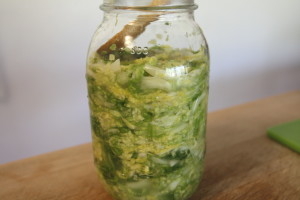
Pack. Place a handful of shredded cabbage in a clean quart jar and use a wooden spoon to press it down firmly. Very firmly. You want to squeeze out more juice and eliminate air pockets. Now, add more cabbage and repeat. Continue until your cabbage is all in the jar, and, when you press down, the liquid rises above the cabbage. If you don’t have enough liquid, mix about 1/4 teaspoon of salt to 1/4 cup of water and pour it into the jar.
Ferment. Cover the jar and place it someplace where you can see it (you don’t want to forget about it), but out of the bright light. We set ours on the counter in a corner. Now, three times a day, remove the lid, and press the cabbage down so it’s submerged. Another alternative is to weigh down the cabbage with a Ziplock-type bag filled with some water or small, clean rocks; you can then eliminate the need for pressing altogether. We didn’t do that, because we wanted to taste our sauerkraut so we’d know when to stop the fermentation.
Refrigerate. Once the sauerkraut tastes good to you, simply place the jar in the refrigerator to stop the fermentation, and use as, well, sauerkraut.
We love making things like this. It seems magical that the bacteria on the cabbage is exactly what’s needed to ferment it into sauerkraut. And, it also seems a bit sad that fermentation of vegetables has fallen by the wayside. It’s easy, and fewer than 100 years ago, we would guess that nearly everyone made, or knew how to make, things like sauerkraut, so they could store excess produce for the winter months. As far as taste, we’ve only had a taste or two over the last few days — we can tell it’s becoming sauerkraut and it’s quite good, better than the stuff sold in jars, since it tastes fresher and less sour — so we’ll say five stars.
